
The 2018 planting season started relatively slowly for corn, but the crop has officially caught up to the five-year average, with 81% of the crop in the ground as of May 20. Spring planting progress for soybeans and spring wheat also made big strides this past week.
Some states are even further along than the national average – even some major Midwestern states such as Illinois (96%), Indiana (88%) and Iowa (86%). Of the 18 states that produce 92% of the nation’s corn, Pennsylvania (35%), Michigan (50%) and Wisconsin (56%) still have the furthest to go.
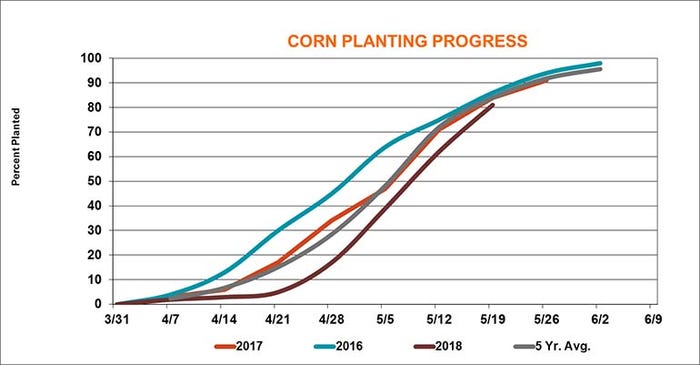
In total, it marks another week of solid progress, planting 19% of the nation’s corn crop last week. Current progress is fully in line with 2017’s pace of 82% and the five-year average of 81%. A group of 12 industry analysts expected progress to reach 80% this past week, which included a Farm Futures estimate of 77% (all estimates ranged between 73% and 86%).
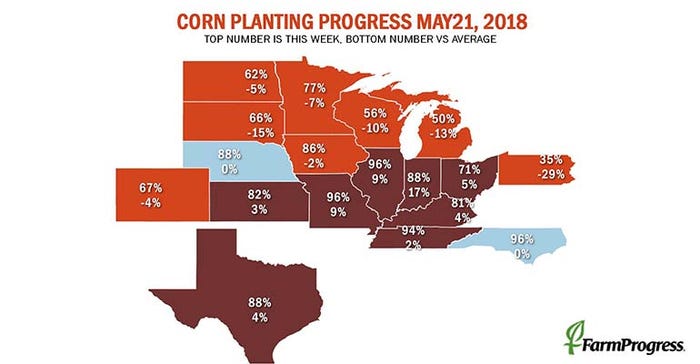
Another 21% of the nation’s soybean crop was planted last week, moving from 35% complete a week prior to 56% as of May 20. That puts this year’s crop moderately ahead of 2017’s pace of 50% and the five-year average of 44%.

Leading the pack are four states that are at least 80% finished, including Arkansas (81%), Illinois (81%), Louisiana (93%) and Mississippi (84%). A few northern states are just getting started but made big strides last week, such as South Dakota (from 4% to 24%), North Dakota (from 12% to 33%) and Wisconsin (from 13% to 33%).
Industry analysts expected soybean planting progress of 54%, including a nearly-on-the-nose Farm Futures estimate of 55%.
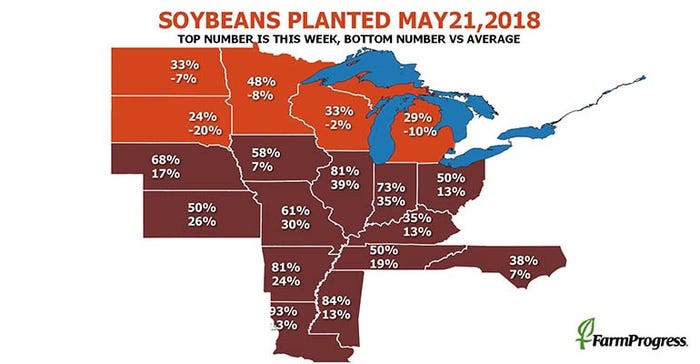
Spring wheat’s planting pace of 79% is tracking right in line with the five-year average of 80% but can’t quite match 2017’s pace of 88%. Of the six states that plant 99% of the nation’s spring wheat, Idaho (96%), South Dakota (94%) and Washington (96%) are nearly wrapped up.
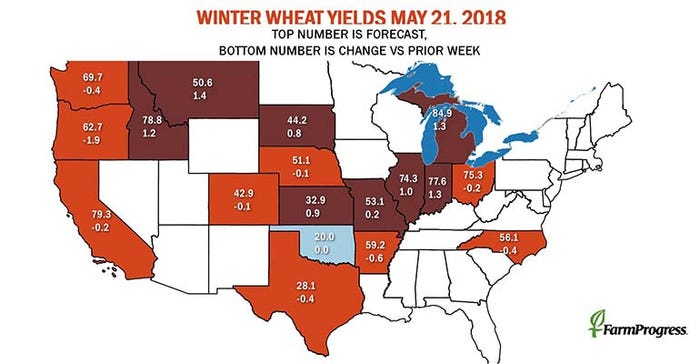
The 2017/18 U.S. winter wheat crop is now 61% heading, versus 71% at this time last year and a five-year average of 64%. A total of 36% of the crop is in good-to-excellent condition, unchanged from a week ago. But yield potential continues to rise according to Farm Futures models, says senior grain market analyst Bryce Knorr.
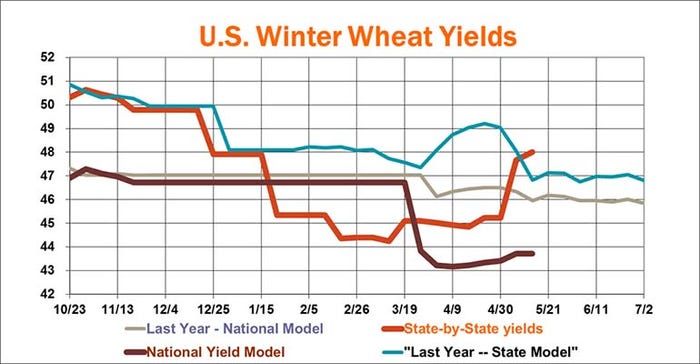
“Yield potential improved to 48 bpa this week, up a third of a bushel per acre and closely matching USDA forecasts,” he says.
Here are some more crop progress updates of note:
Barley – 81% planted (up from 62% a week ago)
Oats – 86% planted (versus a five-year average of 91%)
Sugarbeets – 95% planted (ahead of the five-year average of 89%)
Sorghum – 39% planted (slightly ahead of the five-year average of 38%)
Cotton – 52% planted (up from 36% last week)

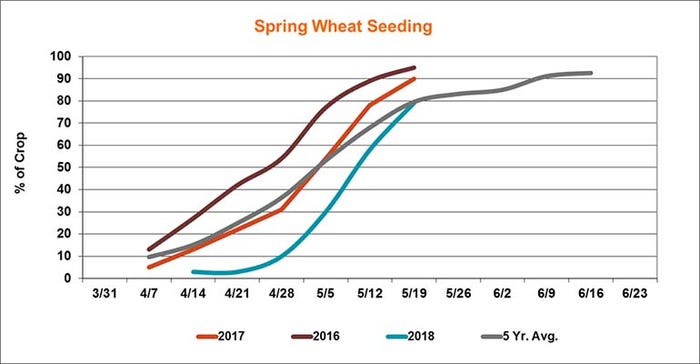
About the Author(s)
You May Also Like






